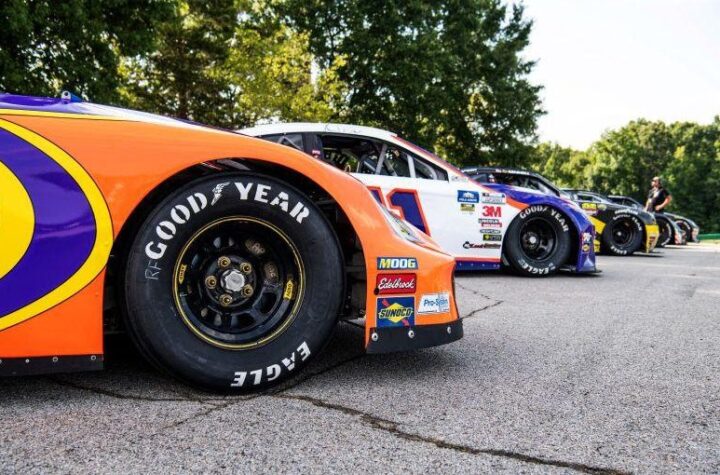
Fuel Cell Pioneer
Honda pushes to be a leader in hydrogen fuel cell vehicle development.
 |
| Honda’s Ben Knight says that hydrogen fuel cell vehicles probably won’t be in dealer showrooms before 2010. |
Q. Could you bring us up to date on your hydrogen fuel cell vehicle program?
A. Honda’s strategy with its fuel cell program is to take evolutionary steps. Our first generation fuel cell vehicle called the FCX has gone through four evolutions or prototype stages. We started in 1999 with the first version, which was based on our electric EV Plus subcompact vehicle. By the third version in 2001 we had reduced the size of the hardware, so the car could seat four passengers instead of just two and have trunk space.
We used a methanol reformer in version two but the latest version uses compressed hydrogen storage and our own fuel stack design, as opposed to Ballard’s. We also added an ultra-capacitor battery. We have concentrated on improving the energy efficiency and performance of the FCX and the second generation 2005 model has a 20 percent improvement in range.
Q. What are your overall goals with the FCX program?
A. Honda wants to focus on technological advancement, real world applications, hydrogen infrastructure feasibility and development and effective cooperation with organizations like the California Fuel Cell Partnership. The FCX has helped us focus on the real issues. We are putting vehicles in third-party hands, like delivering an FCX to New York State for sub-zero weather use, and taking a deep dive into the feasibility of the hydrogen infrastructure.
We took a lead in certifying the FCX for regular commercial use with the EPA in 2003 as the first certified fuel cell vehicle. Because the ’05 model is quite different from its predecessor, we have recertified the vehicle. With our own stack versus the previous Ballard stack, we have improved the combined fuel economy rating by 18 percent, from 48 to 57 miles per kilogram of hydrogen, and our range increased from 160 to 190 miles.
Q. What do you see as the primary challenges facing fuel cell vehicles?
A. In terms of the powertrain, it is acceleration performance and energy efficiency. The packaging challenges are about space efficiency and safety performance.
Q. How are you dealing with the safety issues associated with a hydrogen FCV?
A. Honda has done a full set of crash tests with the FCX and it meets all the requirements. We have located the fuel storage tanks within the wheel base and there is a solenoid operated shut-off system. All the safety aspects of the high energy electrical system are dealt by the under-floor layout and by isolating the cables.
Q. Why did you decide to use the EV Plus chassis for the FCX when others are using more spacious sport utility vehicles as the basis for their FCVs?
A. We did have a larger FCV development vehicle previously, but we decided to challenge ourselves with packaging a small car. The EV Plus electric car design — which we called a “cabin on a plate” — was obviously a logical basis for our FCV, because of its electrical powertrain.
Q. The under-floor sandwich construction seems to be a popular one for FCVs?
A. Yes. When we saw DaimlerChrysler come out with its A Classbased FCV after our FCX we smiled.
Q. What are the advantages of this layout?
A. The fuel cell components are heavy, so the location under the floor helps lower the center of gravity, which is good for the vehicle dynamics.
Q. As you say, fuel cell vehicles tend to be heavy. How is the FCX in this regard?
A. The latest FCX weighs 3745 pounds, which means we are just now getting the weight below that of the old electric vehicle, but with a lot more power and capability. The vehicle is all steel construction. Even without the use of aluminum body components, the FCX is achieving high range and high efficiency, partly because of the ultra-capacitor.
Q. Could you explain the advantages of the ultra-capacitor?
A. We first developed it for our gas-electric hybrid concept car. Its quick response, high efficiency and high power make it a good match for the FCX. One advantage is that the ultra capacitor does not need a high voltage control unit (which draws power) in normal driving because most of the time the vehicle is operating off the fuel stack.
Q. After using Ballard stacks for some years, you have developed your own design. What are its main characteristics and advantages?
A. Our stack design uses stamped metal flow plates, as opposed to carbon and resin. The seals are bonded onto the plates and it does not need the big through-bolts of conventional stacks. Compared to earlier prototypes, the stack reduces the component count by almost 50 percent and doubles the output density.Also, our aromatic membrane allows for a wider range of operating temperature — from minus 20 degrees C to 95 degrees C — than fluorine membrane compounds. The conductivity of the aromatic membrane is critical in cold temperatures; it allows the stack to heat up five times faster. We demonstrated the cold start capabilities of our stack a year ago. After a night at minus 11 degrees C, the FCX started up and was drivable.
Q. What do you see as the most promising method of on-board hydrogen storage in the future?
A. We are using compressed storage — 5000 psi — currently, but we believe that low pressure or solid state storage is the way to go. A breakthrough in hydrogen storage would speed development of the hydrogen economy because it impacts so many areas, such as distribution.
Q. What is your strategy regarding hydrogen infrastructure?
A. We are working on home energy stations — our second generation unit developed with Plug Power is operating in New York state. We think it’s important to understand the whole system, meaning the well to wheels process. If you only develop the car, you don’t necessarily understand the surrounding aspects. Our approach is to use the fuel cell vehicle to offer consumers new values, like home refueling.
Q. When do you think we will see commercially viable fuel cell vehicles available in quantity?
A. We are taking FCVs to consumers now, which is a very valuable step. It will be sometime after 2010 before we believe FCVs will be seen in showrooms.












More Stories
Extend Your Range, Maximize Your Storage with FRDM’s 45 Gallon Combo
How to Install a Ford Bumper Yourself (Step-by-Step Guide)
How Artificial Intelligence Could Revolutionize the Car Insurance Industry